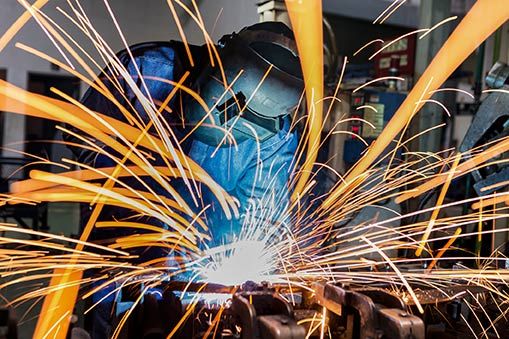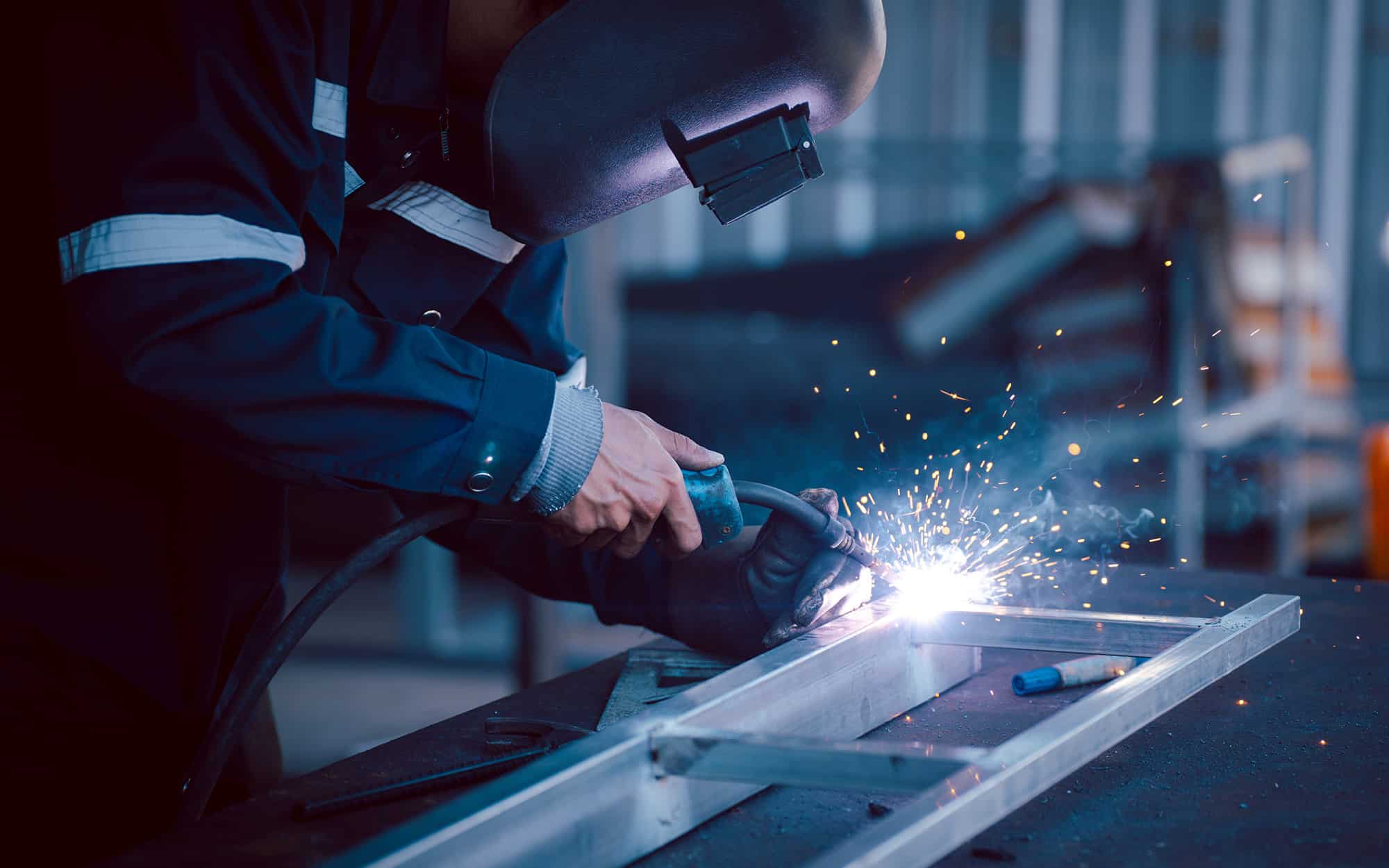Reliable fixes for poor fusion from Montana Mobile Welding and Repair
Everything about Welding: Trick Insights Into Techniques and Ideal Practices for Success
Welding encompasses a range of strategies, each matched for certain products and applications. Comprehending these methods, such as GMAW, SMAW, and TIG, is crucial for attaining perfect outcomes. The best devices and security techniques can not be ignored. As prep work and fixing play essential duties in the welding procedure, grasping these elements can considerably enhance the high quality of the final item. What are the essential elements that guarantee a successful weld?
Recognizing Various Welding Methods
Welding techniques include a variety of approaches, each fit to certain applications and products. Among one of the most common techniques are Gas Metal Arc Welding (GMAW), Shielded Metal Arc Welding (SMAW), and Tungsten Inert Gas Welding (TIG) GMAW, likewise understood as MIG welding, is popular for its rate and flexibility, making it suitable for slim products. SMAW, or stick welding, is preferred for its simplicity and efficiency in outside environments, particularly with thicker steels. TIG welding offers precision and control, making it appropriate for intricate job and non-ferrous metals (Welding). Each method has its unique benefits and considerations, allowing welders to pick the very best approach based on the project's requirements, product type, and preferred end results. Understanding these methods is essential for successful welding
Crucial Welding Equipment and Tools
While numerous welding techniques call for specific abilities, the best devices and devices are just as vital for attaining high quality outcomes. Necessary welding devices includes welding equipments, which differ depending upon the technique-- such as MIG, TIG, or stick welding. Safety equipment, consisting of aprons, gloves, and safety helmets, assurances safety and security and convenience during the process. Additionally, fixtures and clamps aid safeguard products in place, ensuring precision in welds. Consumables like welding poles, cable, and protecting gas are additionally vital elements that affect the quality of the weld. Additionally, tools such as mills and cutters promote surface prep work and post-weld ending up, adding to a specialist outcome. Spending in high-grade tools inevitably boosts the effectiveness and performance of welding tasks.
Safety Practices in Welding
Appropriate safety methods are essential in the welding industry to shield workers from possible risks. Welders have to wear suitable individual protective equipment (PPE), including safety helmets with appropriate shading, handwear covers, and flame-resistant clothes. Sufficient ventilation is important to minimize exposure to dangerous fumes and gases generated during the welding procedure. Furthermore, workers should be educated in the correct handling of welding tools to avoid crashes. Fire security steps, such as maintaining flammable products far from the welding area and having fire extinguishers readily available, are essential. Regular examinations of tools and work areas can assist identify possible risks prior to they lead to mishaps. By sticking to these safety practices, welders can create a more secure working atmosphere and minimize dangers connected with their trade.
Readying Materials for Welding
Preparing materials for welding is an essential action that considerably influences the quality and integrity of the end product (Montana Mobile Welding and Repair Belgrade Fabrication). Proper prep work includes cleansing the surface areas to eliminate contaminants such as dust, corrosion, and oil, which can compromise the weld. Methods such as grinding, sanding, or utilizing solvents are generally employed to attain a clean surface. Furthermore, making sure that the products fit together snugly is vital; spaces can result in weak welds. It's likewise important to take into account the alignment and positioning of the parts, as this will certainly influence the convenience of welding and the final outcome. Selecting the suitable filler product and making certain compatibility with the base steels is essential for attaining strong, long lasting welds.
Tips for Achieving High-Quality Welds
Attaining premium welds calls for interest to detail and adherence to best techniques throughout the welding procedure. Proper joint prep work is essential, making certain surface areas are free and clean from impurities. Picking the suitable filler material and welding technique based on the base steels is crucial for optimal bonding. Keeping regular traveling rate and angle while welding can advertise and prevent problems harmony. Additionally, regulating heat input is vital; excessive warm can lead to bending and damaged joints. On a regular basis inspecting the welds during the process enables instant modifications if essential. Ultimately, using suitable post-weld therapies, such as cleaning and tension relief, can improve the resilience and integrity of the weld, inevitably guaranteeing an effective outcome.
Fixing Usual Welding Issues
Welding frequently presents challenges that can influence the high quality and integrity of the end product. Usual problems such as porosity, inconsistent weld grains, and overheating can emerge, each calling for particular repairing techniques. Understanding these issues is essential for welders to boost their abilities and accomplish perfect outcomes.
Porosity Problems Explained
Although porosity can often be neglected, it remains a vital concern in welding that can jeopardize the integrity of a finished item. Porosity describes the existence of little gas pockets within the weld bead, which can lead and compromise the joint to early failing. This problem generally develops from contaminants, dampness, or inappropriate protecting gas insurance coverage during the welding procedure. To minimize porosity, welders need to validate that the base materials are dry and tidy, use appropriate securing gases, and keep regular welding parameters. Routinely examining the equipment and setting can also aid recognize prospective problems prior to they manifest in the weld. Addressing porosity effectively is important for attaining solid, long lasting welds that satisfy quality criteria.

Inconsistent Weld Beads
Inconsistent weld beads can substantially influence the top quality and toughness of a finished product. Numerous aspects add to this problem, consisting of inappropriate traveling rate, wrong amperage setups, and irregular electrode angles. When the welder relocates too quickly, a bead might appear slim and lack penetration, while relocating too gradually can trigger too much accumulation. Furthermore, using the wrong amperage can cause either damaging or too much spatter, both of which concession weld stability. The welder's strategy, such as irregular lantern activity, can likewise bring about unequal grain look. To minimize these troubles, welders need to focus on maintaining steady, controlled movements and ensuring correct tools setups to attain harmony in their welds. Consistency is key to achieving reputable and solid welds.
Overheating and Bending Issues
Extreme warm throughout the welding procedure can bring about substantial getting too hot and deforming concerns, affecting the structural integrity of the work surface. These issues frequently materialize as distortion, which can compromise positioning and fit-up, making additional assembly challenging. Aspects adding to overheating include the option Website of welding specifications, such as voltage and travel speed, along with the type of product being welded. To minimize these issues, welders need to preserve regular travel speed and suitable heat input while monitoring the workpiece temperature level. Furthermore, preheating or post-weld heat therapy can help relieve stresses brought on by quick air conditioning - Belgrade. Regular assessment and adherence to ideal practices are crucial in stopping overheating and making sure the longevity and dependability of bonded frameworks
Often Asked Concerns
What Are the Career Opportunities in the Welding Market?
The welding sector offers varied career possibilities, including placements as welders, designers, instructors, and examiners. Specialists can function in production, building, aerospace, and auto industries, profiting from strong demand and competitive salaries in different duties.
How Can I Boost My Welding Speed Without Sacrificing Quality?
To enhance welding speed without compromising high quality, one must practice reliable techniques, keep devices, enhance setups, and enhance hand-eye coordination. Normal training and go right here looking for feedback can additionally substantially add to attaining faster, high-grade welds.
What Certifications Are Available for Welders?
Countless qualifications exist for welders, including those from the American Welding Society (AWS), the National Center for Building Education and Research (NCCER), and different industry-specific companies. These credentials improve employability and demonstrate skill effectiveness.
How Does Welding Affect the Features of Metals?
Welding affects the homes of metals by modifying their microstructure, which can lead to modifications in ductility, toughness, and firmness. Warmth input and air conditioning prices throughout the process significantly influence these material features.
Can I Bonded Dissimilar Metals Together?
